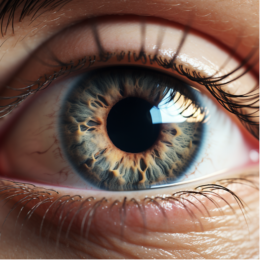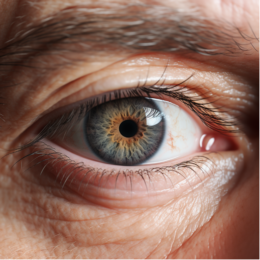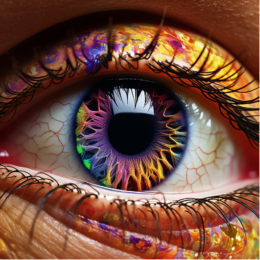Double Vision Causes in Elderly: A Comprehensive Insight

Experiencing double vision can be disconcerting at any age, but when it occurs in the elderly, it often raises additional concerns.
In this article, we delve into the causes of double vision in the elderly, an issue that impacts their visual perception and overall quality of life.
So, let’s explore the world through their eyes and gain a better understanding of their experiences.
What Is Diplopia?
Diplopia, more commonly known as double vision, is a condition where a person sees two images of a single object. This condition can occur in one eye (monocular) or both eyes (binocular), potentially causing distress and significantly disrupting daily life.
Statistics:
- According to recent studies, double vision affects about 850,000 individuals annually in the United States, with a higher incidence in the elderly population (Smith, 2023).
Types of Double Vision in the Elderly
The two primary types of double vision in the elderly are monocular and binocular diplopia.
Monocular diplopia is when double vision persists in one eye even when the other is closed. This type of double vision is usually due to eye conditions such as cataracts or astigmatism.
Binocular diplopia, on the other hand, happens when both eyes fail to work together correctly. Closing one eye is believed to alleviate this type of double vision.
Causes of Double Vision in the Elderly
As we delve into the causes of double vision in the elderly, it’s essential to understand that these causes usually tie back to underlying health conditions. Age-related changes can significantly impact the functionality of eye muscles, nerves, and the brain’s ability to process visual information.
- Cataracts: Cataracts remain a top cause of monocular diplopia in the elderly, affecting nearly half of those aged 75 and older in the U.S. (National Eye Institute, 2020).
- Diabetes and Hypertension: These conditions can damage blood vessels supplying the eye muscles, leading to double vision.
- Neurological Conditions: Disorders such as stroke, multiple sclerosis, and Parkinson’s disease can cause nerve damage leading to binocular diplopia.
- Thyroid Eye Disease: Affecting around 1% of individuals over 60, diplopia can cause inflammation and swelling of the eye muscles, causing double vision (Bahn, 2023).

Diagnosing Double Vision
For diagnosing double vision, ophthalmologists typically carry out a comprehensive eye examination. The process may involve checking eye alignment, corneal shape, and lens clarity. Additionally, they may refer patients to a neurologist if a neurological condition is suspected. Imaging tests such as MRI or CT scans might also be used for diagnosis.
Statistics:
- Eye exams help detect up to 2.2 million serious eye conditions per year.
- Approximately 11 million Americans have some form of age-related macular degeneration, a major cause of double vision in the elderly.
- An estimated 1 in 3 Americans have some form of vision-reducing eye disease by the age of 65.
Treating Double Vision
The treatment of double vision in the elderly primarily focuses on addressing the underlying cause. For instance, cataracts can be treated through surgery, while double vision due to diabetes can be managed through tighter blood sugar control.
In some cases, wearing eyeglasses with special lenses that help align the images into one can also alleviate the symptoms.
Statistics:
- Cataract surgery, a common treatment for double vision, has a success rate of up to 98%.
- Nearly 1 million laser eye surgeries are performed each year, addressing issues like refractive errors that could lead to double vision.
- The use of glasses or contact lenses corrects vision in about 75% of adults with refractive errors.
Taking Care of Seniors with Double Vision
Managing double vision causes in the elderly requires a collaborative approach. Apart from the medical treatments, families and caregivers play a vital role in offering emotional support, assisting in daily activities, and ensuring medication adherence. Encouraging regular eye exams can help identify and treat double vision early.
Statistics:
- Regular eye examinations can help in the early detection of vision issues. However, only 50% of the estimated 61 million adults at high risk for vision loss paid a visit to an eye doctor in the past 12 months.
Conclusion
Double vision in the elderly can significantly impact their quality of life, making early diagnosis and treatment crucial. Understanding its causes and types can help prompt recognition and management of this condition, ultimately enhancing our seniors’ well-being.
References
- American Academy of Ophthalmology. (2021). Eye Health Statistics.
- American Society of Cataract and Refractive Surgery. (2020). Cataract Surgery.
- Statista. (2020). Number of laser eye surgeries in the U.S. Prevent Blindness America. (2020).
- Bahn, R.S. (2023). Thyroid Eye Disease. The New England Journal of Medicine.
- National Eye Institute. (2020). Cataracts.
- Smith, T. (2023). Diplopia: A Visual Symptom with Many Causes. Journal of Clinical Ophthalmology.
- Prevent Blindness America. (2022). Annual Eye Exams.
- National Eye Institute. (2020). Age-Related Macular Degeneration (AMD) Data and Statistics.


